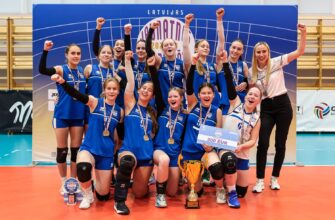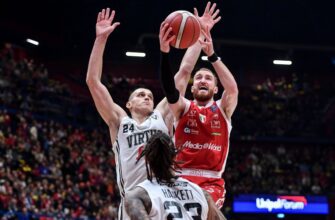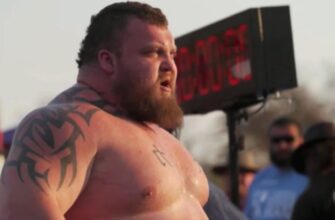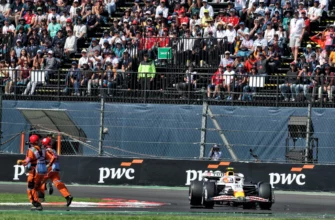Following the conclusion of the IIHF U18 World Championships and the NHL Draft Lottery, it’s time for the latest prospect rankings for the 2025 NHL Entry Draft, scheduled for June.
Unlike previous iterations, these rankings are not based purely on model outputs. They incorporate significant input from viewings, insights from scouts, and an assessment of how individual playing styles and skills are likely to translate to the NHL level.
Several players saw their draft stock rise considerably due to improved projections, unique skill sets, and high potential. Conversely, some players dropped in the rankings based on concerns about the translatability of their skills, inconsistencies in projections, or questions about their ability to perform consistently.
This year’s draft class exhibits considerable variance. There’s a general consensus on the top two prospects, followed by two more players just below them, and then the field opens up significantly. Teams selecting in the top 10 face a choice: target a player with a high floor but lower upside, or opt for a high-risk, potentially high-reward “unicorn” prospect. These factors have been weighed in the rankings, which should not be viewed as a mock draft.
Considering all these factors, here are the top 32 prospects for the 2025 NHL Draft, along with some honorable mentions.

- 1. Matthew Schaefer D, Erie Otters (OHL)
- 2. Michael Misa C, Saginaw Spirit (OHL)
- 3. James Hagens C, Boston College Eagles (NCAA)
- 4. Porter Martone RW, Brampton Steelheads (OHL)
- 5. Roger McQueen C, Brandon Wheat Kings (WHL)
- 6. Anton Frondell C/RW, Djurgardens (Allsvenskan)
- 7. Jackson Smith D, Tri-City Americans (WHL)
- 8. Victor Eklund LW, Djurgardens (Allsvenskan)
- 9. Caleb Desnoyers C, Moncton Wildcats (QMJHL)
- 10. Jake O`Brien C, Brantford Bulldogs (OHL)
- 11. Carter Bear C/LW, Everett Silvertips (WHL)
- 12. Brady Martin C/W, Sault Ste. Marie Greyhounds (OHL)
- 13. Justin Carbonneau RW, Blainville-Boisbriand Armada (QMJHL)
- 14. Radim Mrtka D, Seattle Thunderbirds (WHL)
- 15. Logan Hensler D, Wisconsin Badgers (NCAA)
- 16. Lynden Lakovic LW, Moose Jaw Warriors (WHL)
- 17. Braeden Cootes C, Seattle Thunderbirds (WHL)
- 18. Kashawn Aitcheson D, Barrie Colts (OHL)
- 19. Cameron Schmidt RW, Vancouver Giants (WHL)
- 20. Benjamin Kindel RW, Calgary Hitmen (WHL)
- 21. Cameron Reid D, Kitchener Rangers (OHL)
- 22. Cole Reschny LW, Victoria Royals (WHL)
- 23. Cullen Potter LW, Arizona State Sun Devils (NCAA)
- 24. Malcolm Spence LW, Erie Otters (OHL)
- 25. Ivan Ryabkin C, Muskegon Lumberjacks (USHL)
- 26. Joshua Ravensbergen G, Prince George Cougars (WHL)
- 27. Blake Fiddler D, Edmonton Oil Kings (WHL)
- 28. Jack Murtagh C/LW, U.S. National Team Development Program
- 29. Sascha Boumedienne D, Boston University Terriers (NCAA)
- 30. Jack Nesbitt C, Windsor Spitfires (OHL)
- 31. William Moore C, U.S. National Team Development Program
- 32. Bill Zonnon LW, Rouyn-Noranda Huskies (QMJHL)
- Honorable mentions (in alphabetical order)
1. Matthew Schaefer
D, Erie Otters (OHL)
The defenseman from the Erie Otters is projected to be a foundational top pairing player for years to come. A dynamic presence on both offense and defense, the 6-2 blueliner skates effortlessly and uses his agility to effectively defend against opponents one-on-one, while also generating offense with strong rush capabilities.
Across the league, executives and scouts see him as a future elite NHL defenseman and a cornerstone piece for a championship team. With the ability to control play from the blue line, handle tough matchups, and run a power play, Schaefer possesses the tools to become a top-10 defender in the league.

2. Michael Misa
C, Saginaw Spirit (OHL)
Misa, granted exceptional status in the OHL, delivered one of the most impressive goal-scoring seasons in recent history, netting 62 goals in just 65 games. He is confidently projected as a top-line forward with the potential to consistently average more than a point per game at the NHL level.
Misa’s offensive instincts are considered elite. He processes the game rapidly and executes plays at high speed. He is seen as NHL-ready and has the potential to become an elite top-line center if his development trajectory continues.
His two-way game improved significantly this season, and combined with his explosive speed and offensive talent, Misa profiles as a foundational piece to build a Stanley Cup contending team around.

3. James Hagens
C, Boston College Eagles (NCAA)
A skilled center, Hagens is projected as a top-line forward or one of the NHL’s best second-line centers. He brings a strong work rate with excellent speed and two-way ability, suggesting he should be effective at driving play in the NHL. The professional aspects of his game, such as supporting the puck, winning battles, and defensive anticipation, will ease his transition to the NHL while he enhances his offensive game.
Hagens likely needs another season at Boston College to further refine his decision-making and add a more dynamic offensive dimension to become a top-line NHL center. His understanding of spacing and his anticipation abilities are standout qualities among his peers. He shows a blend of playmaking skill and two-way ability reminiscent of players like Clayton Keller and Matty Beniers.

4. Porter Martone
RW, Brampton Steelheads (OHL)
The 6-3 right winger is projected as a high-end second-line player with a competitive edge similar to players like Corey Perry and Tom Wilson. A large, physical forward, Martone is an offensive threat who can both score himself and set up teammates. His competitive nature makes him an effective agitator, and he physically imposes himself on opponents. He needs to fine-tune his competitiveness and physicality to maximize their effectiveness and adjust his skating posture for better efficiency.
His unique combination of scoring ability, size, and physical skill makes him a very appealing prospect. While his most likely projection is a top-six forward, Martone has a legitimate opportunity to develop into a top-line winger if his skating improves.

5. Roger McQueen
C, Brandon Wheat Kings (WHL)
One of the most debated prospects due to injury concerns (he played only 17 games this season) and also his incredible natural talent.
McQueen is often described as a `unicorn` because he is a 6-5 center who skates with speed and mobility typically seen in smaller players, despite some unusual mechanics that may be related to adjusting to his size. His projection as an elite top-line center lacks confidence due to limited playing time. Elite right-handed centers are rare in the NHL, and McQueen`s size and willingness to physically dictate play add significant value. He possesses professional defensive habits that are translatable to the NHL, along with unique offensive potential.
He represents a textbook case of high risk, high reward. McQueen needs to play against tougher competition to develop his ability to protect himself and the puck, and create offense against larger opponents. If developed properly, he could become a two-way force in the NHL.

6. Anton Frondell
C/RW, Djurgardens (Allsvenskan)
Frondell is a versatile two-way forward capable of playing both center and right wing. His flexibility is appealing to teams, although many believe his potential is highest as a winger in the NHL. Frondell is coming off one of the most productive seasons by an under-18 player in Allsvenskan history, leading to a confident projection as a first-line NHL forward.
He is a smart player who dissects defenders in one-on-one situations and breaks down defensive coverage in the offensive zone. The finer points of Frondell’s game are translatable, including excellent forechecking, willingness to attack the middle of the ice, and high-level anticipation on both sides of the puck.
Frondell has demonstrated the ability to drive play against senior-level players in the Allsvenskan, which has historically translated well to the NHL. He is projected to produce between 75 and 85 points per season. His playing style translates effectively, making executives excited about his potential to enter the league within the next 18 months. His combination of two-way ability, great anticipation, and incredible puck skills make him one of the most captivating prospects in the draft.

7. Jackson Smith
D, Tri-City Americans (WHL)
Smith is a large, physical defenseman widely considered the second-best defender in this draft class. As a pure defender, Smith possesses all the attributes of a top-four shutdown player. He defends against rushes exceptionally well, closes gaps effectively, and directs play in transition. His offensive game began to develop more towards the end of the season, and he showed strongly at the IIHF U18 tournament. Given the importance of transition defense in a shutdown role, Smith has a real chance to reach his ceiling projection as a No. 3 matchup defenseman.
Smith combines skating ability, size, and poise. His development will hinge on effectively using his excellent mobility to prevent rush offense, becoming a more consistent offensive threat, and continuing to improve his decision-making. If Smith can drive play on both sides of the puck in transition, he has the potential to become a No. 2 defender.

8. Victor Eklund
LW, Djurgardens (Allsvenskan)
Eklund is projected as a top-six forward with a good chance of becoming a top-line contributor. Despite concerns about his size, Eklund’s playing style translates very well to the NHL. He plays with intensity that belies his measurements, showing a high motor and excellent forechecking ability. Should he grow, which has happened with other prospects, Eklund’s projection as a 70-point producer becomes more certain.
Eklund excels in transition and attacks defenders with speed and fearlessness, driving towards the inside and using his body effectively to win or protect pucks. His smaller stature has forced him to learn excellent body positioning for puck protection. His off-puck play is very mature and should quickly earn trust from NHL coaches. He has the potential to be a difference-maker in the NHL, and there is every reason to believe his blend of hard-nosed play with soft skill will translate seamlessly.

9. Caleb Desnoyers
C, Moncton Wildcats (QMJHL)
Desnoyers might be drafted higher than ninth overall because he is considered one of the best two-way players in the draft. He has been described as a coach’s ideal player because he can handle any assignment, offensive or checking, and execute consistently. Desnoyers is projected as a quality second-line center, with a decent possibility of becoming a first-line player.
He is a cerebral player with excellent playmaking abilities. He isn`t necessarily flashy, but he is consistently effective and makes intelligent plays with the puck. In short, he is reliable. As one scouting director put it: “He`s the type of player you win with.” Some have quietly compared him to players like Patrice Bergeron and Jonathan Toews.

10. Jake O`Brien
C, Brantford Bulldogs (OHL)
O`Brien is projected to be a point-producing top-six center with the potential to become a top-line center. The right-hander is one of the draft`s best playmakers, regularly creating high-danger scoring chances. O`Brien`s elite playmaking skills will become even more valuable if he can add speed to his game.
O`Brien`s two-way ability has steadily improved throughout the season, through effective puck support, strong defensive tracking, and good stick positioning. He lacks dynamic skating but plays a projectable two-way game. There is some risk due to his slightly slighter build compared to other centers available, but O`Brien is expected to comfortably become a top-six point producer in the NHL.

11. Carter Bear
C/LW, Everett Silvertips (WHL)
Bear is the kind of player coveted by teams looking for high-end skill and playmaking. He is versatile and projected as a 65-75 point second-line player, with most anticipating he will play full-time on the wing. He is an excellent playmaker with good hands in tight areas, making him a threat around the net and one of the best offensive facilitators in the draft.
In addition to his offensive talents, Bear has professional defensive habits that will translate well. His skating posture needs to be more upright to allow for a more explosive stride that can capitalize on his skills. Bear represents a good mix of soft and hard skills with reliable defensive traits, making him an ideal second-line player who should thrive in a matchup role.

12. Brady Martin
C/W, Sault Ste. Marie Greyhounds (OHL)
Martin has generated significant buzz among scouts after an excellent performance at the IIHF U18 tournament, where he recorded 11 points in seven games. He is a tireless worker who plays with intensity and brings a combination of physicality and skill. Martin is projected as a middle-six forward capable of scoring 20 goals, with potential upside as a second-line player. He is a versatile “Swiss Army Knife” type of player who will likely be most effective on the wing due to his strong play along the boards.
Many top prospects disappear if their A-game is missing, but Martin finds ways to contribute physically, and these traits are translatable. If his scoring doesn`t fully translate, he will still be a valuable member of a third line. His hard-nosed style is becoming rarer in today’s NHL, making Martin`s playing style attractive to many scouts who see him as the type of complementary player teams need to succeed in the playoffs.

13. Justin Carbonneau
RW, Blainville-Boisbriand Armada (QMJHL)
Carbonneau possesses a range of attributes that teams desire, including powerful skating and a dynamic attacking presence. He is projected as a top-six forward with significant potential variance, most likely settling in as a complementary middle-six player. Carbonneau can drive offense through his playmaking and skating, and while he lacks one standout elite talent, he plays a well-rounded offensive game that includes battling through contact, good puck skills, and a decent shot.
Carbonneau is a player with high upside, and there is inherent risk in his projection. He thrives when given time and space, and his development will involve learning to simplify his offensive attacks, drive towards the middle of the ice, and play effectively off his teammates. He has the tools to develop into an effective power forward in the NHL with a few years of development.

14. Radim Mrtka
D, Seattle Thunderbirds (WHL)
A 6-6, right-handed defenseman with good mobility who plays in all situations is exciting to scouts. Mrtka is confidently projected as a top-four shutdown defenseman due to his excellent stick work, mobility, and transition defense. Mrtka should develop into a strong transition defender, a reliable penalty killer, and a steady presence while shorthanded.
He lacks the offensive flair that scouts would ideally see in a top-pairing defenseman, but his skating, size, and intelligence provide him with the tools to develop into a reliable, high-minute, shutdown defender. His late birthday gives him plenty of time to refine his offensive playmaking, first passes, and overall understanding of how best to utilize his physical attributes.

15. Logan Hensler
D, Wisconsin Badgers (NCAA)
The 6-2 defender is projected as a second-pairing defenseman with relatively good confidence. Hensler is very difficult to beat one-on-one because he moves well and maintains good gap control. He doesn`t possess a dynamic offensive trait, but he has shown promise when activating in the rush. There are flashes of offensive skill, such as head fakes and using his mobility to beat players, which, if developed, would be crucial to solidifying him as a two-way defenseman.
Hensler is a longer-term project who likely needs three years before he is ready to make an impact in the NHL. His decision-making under pressure and ability to consistently execute quality plays will determine whether he reaches his potential as a high-end prospect. There are many appealing aspects to his game, with his mobility and transition defense expected to translate well, but he lacks the high-end offensive upside seen in some other defenders in the draft class.

16. Lynden Lakovic
LW, Moose Jaw Warriors (WHL)
The 6-4 left winger possesses translatable scoring ability and excellent speed for his size. He attacks opponents using his large frame to protect the puck and makes plays with good deception. He has the potential to be a dual-threat winger if he can develop his playmaking and decision-making. Lakovic is projected as a middle-six winger with fair confidence due to his scoring ability, speed, and size.
Lakovic’s development will focus on the physical aspects and decision-making. He needs to utilize his size against defenders and drive towards the middle of the ice to capitalize on his quick hands and shot. Lakovic has quality offensive potential that projects confidently as an NHL player, with the possibility of becoming a 60-point player.

17. Braeden Cootes
C, Seattle Thunderbirds (WHL)
A right-handed center, Cootes was a standout performer at the U18 World Championships. He is projected as a middle-six player with value on both sides of the puck. His floor is likely a third-line checking center, comparable to Yanni Gourde. Cootes possesses excellent speed that allows him to dictate the pace and drive play. He anticipates the game at a high level, which enables him to leverage his speed effectively at even strength and on the penalty kill.
Cootes is on a longer development path and needs to add strength to truly become a quality NHL center. His relentless pursuit of the puck and strong playmaking qualities make him a desirable asset in this year’s draft. There is much to like about his skill set, and with patient development, he could become a solid second-line contributor.

18. Kashawn Aitcheson
D, Barrie Colts (OHL)
There is a real possibility that Aitcheson could be drafted in the top 10 given his style of play, but his projection as a No. 4/5 defender places him below players with higher offensive upside. Aitcheson plays with significant truculence and aggression, while also exhibiting confidence with and without the puck. He has all the makings of being a disruptive force who plays tough minutes and is projected as a No. 4 defender.
Scouts view him as a hard-nosed two-way defender with significant bite who can be a momentum shifter with his physical presence.
He requires development time, as his skating and playmaking are still raw, but his competitive attributes and the progress he showed this season are very promising. Aitcheson’s offensive involvement increased as the season went on, but he is likely two or three years away from being ready for the NHL. When he is ready, he is exactly the type of defender every coach and general manager would want on their team.

19. Cameron Schmidt
RW, Vancouver Giants (WHL)
While size isn`t the only factor, it`s extremely uncommon for a player smaller than 5-9 to make it to the NHL. I anticipate Schmidt will be drafted lower than 19th primarily because he is 5-7.
However, other analytical models rate Schmidt as a top-15 player with boom-or-bust potential as a second-line winger. He possesses exceptional speed and excellent puck-handling abilities, making him a dangerous offensive threat.
Scoring 40 goals in the WHL is a difficult feat. Only three players under 19 reached that mark this season (Schmidt, Gavin McKenna, and Carter Bear). Schmidt has strong offensive instincts but needs to improve his play selection efficiency to translate his game to the NHL level. He can be somewhat of a pest and engage physically, but to reach his ceiling, he needs to round out his off-puck play and be more consistently impactful shift-to-shift.

20. Benjamin Kindel
RW, Calgary Hitmen (WHL)
Kindel had excellent numbers in the WHL, putting up 99 points in 65 games. The right-winger has significant skill and terrific hockey sense. Kindel is projected as a middle-six player, with the most probable outcome being a third-line winger. He doesn’t have blistering top speed but is agile and difficult to contain due to his elusive style. He needs to refine how he utilizes his skill, as it currently lacks a dynamic element. Adding strength will greatly help in improving puck protection and his ability to drive towards the middle of the ice to create scoring chances.
Defensively, Kindel provides tremendous value. He forechecks and backchecks effectively, blocks lanes, and wins his fair share of puck battles. There is real value as a checker and penalty killer that will translate to the NHL. He consistently competes for pucks and makes things difficult for opponents with his pace. If his scoring translates, he will likely be a 50-point, two-way player. If not, a 40-point, two-way checker who is also a valuable penalty killer will be a good complementary piece in the NHL.

21. Cameron Reid
D, Kitchener Rangers (OHL)
A slighter defenseman, Reid is a fast and agile skater who consistently activates in the rush. Reid has the potential to be a top-four defender if he can develop his offensive traits, particularly his playmaking. His skating allows him to create time and space, evade forecheckers, and put defenders in difficult positions. The next step is for him to use the space and lanes he creates to facilitate offense more effectively.
Defensively, Reid is an excellent rush defender thanks to his superb skating and good stick work. He guides players towards the outside with his stick and uses his skating to disrupt rushes. In the defensive zone, his stick timing is perfect for lifting opponents` sticks as the puck arrives, deflecting shots, and blocking passing lanes. The upside is present due to his skating, and reaching a top-four level requires patience in his development.

22. Cole Reschny
LW, Victoria Royals (WHL)
Reschny may end up being drafted higher on draft day after a standout performance at the U18 World Championships. No player has risen as much as Reschny in the second half of the season, largely due to his offensive production in the WHL playoffs. Reschny’s projection elevated from a third-line player with less certainty to a relatively confident middle-six player.
He is not as dynamic as his point totals might suggest, but his anticipation and reads are among the best in this draft class. He isn`t big, but he is effective when he engages physically and understands how to play through contact. His development will focus on adding speed and strength to complement his two-way ability and become a versatile “Swiss Army Knife” type of player in the NHL who can score 50 points.

23. Cullen Potter
LW, Arizona State Sun Devils (NCAA)
Potter had a strong freshman season in the NCAA, especially considering he didn’t turn 18 until midway through the campaign. He showed consistent growth that culminated in a standout performance at the U18 World Championships. His speed is at the NHL level, making him one of the best skaters in the draft class. He understands how to effectively use his skating to pressure opponents, drive the pace of play, and create offense. He looks to drive to the middle of the ice, makes plays at top speed, and understands when to pause on the rush to allow plays to develop.
Potter is a dynamic skater with flashes of dynamic skill. His off-puck play, both offensively and defensively, improved significantly this season, resulting in him becoming a play driver. He has boom-or-bust potential, but if he reaches his ceiling, he could be a top-six player. The confidence in his projection has steadily increased this season, and with two more NCAA seasons, Potter should be one of the best players at the collegiate level by the time he signs his entry-level NHL contract.

24. Malcolm Spence
LW, Erie Otters (OHL)
Spence falls out of the top half of the first round largely because other players surpassed him, but his lack of dynamic offensive ability combined with non-elite production affected his projection. His relentless work ethic, tenacity, and two-way ability give him a high floor as an NHL regular. His lack of play-driving ability and high-end playmaking limits his upside to that of a third-line forward.
He isn’t flashy in any way, but he is very effective. He is one of the most defensively sound forwards in the draft and understands how to forecheck to cause turnovers. His tenacity will translate, and his shot is good enough to be a threat from close range. Coaches appreciate this type of player on their third lines in the playoffs, and Spence should develop into a solid complementary piece in the NHL.

25. Ivan Ryabkin
C, Muskegon Lumberjacks (USHL)
Ryabkin is a highly debated prospect, appearing in various spots on draft boards. Depending on who you talk to, feedback ranges from a potential second-line player to someone who might not make the NHL at all. This explains the variance in his projection. He is most likely to become a depth NHL player, but there is a good chance he could develop into a middle-six, physical presence capable of scoring 15 to 20 goals.
When he is performing well, it’s easy to see the potential. He is crafty, identifies passing lanes, and delivers accurate passes to set up scoring chances. When Ryabkin moves his feet to drive towards the middle of the ice and create passing lanes, he is a very effective player. His physicality on both sides of the puck should translate to becoming a good checking-line player, with some creative scoring ability if he can develop puck protection and inside ice-battle skills.

26. Joshua Ravensbergen
G, Prince George Cougars (WHL)
It is rare for a goaltender to be a consensus first-round pick, but Ravensbergen fits that description. Teams admire his 6-5 frame with long limbs and good flexibility. He is able to cover significant portions of the net, and his puck tracking allows him to proactively move and aggressively angle himself. His lateral movement is explosive while maintaining control, preventing over-sliding and excessive activity. He is sharp in his crease management, calmly directing pucks and communicating with his defensemen regarding coverage.
Ravensbergen does have issues with layered screens, which is a common challenge for young goaltenders and even NHLers. His elite puck tracking helps him stay ahead of the play, preventing erratic movements. This contributes to the calmness that scouts discuss and is a quality that will serve him well as he strives to become an NHL starter.

27. Blake Fiddler
D, Edmonton Oil Kings (WHL)
There`s a possibility that Fiddler could be drafted higher because he is a right-handed defenseman with NHL bloodlines (his father Vernon played 877 NHL games) and possesses an NHL-sized frame at 6-4, 210 pounds. As scouts and executives say, “Those guys don’t grow on trees,” and Fiddler fits that description.
He is a strong defender, effectively taking away time and space from opponents and making physical battles difficult for them. He is strongly projected as an NHL player with a chance to become a No. 4 defenseman. Among scouting circles, there is belief he can become a second-pairing defender because he has a long development path and his physical playing style is expected to translate well.
Fiddler’s decision-making could improve, but he is constantly active and can be coached to be more effective with his reads. His desire to be a difference-maker and his package of plus skating, physical play, and size are appealing to teams. He is a project and will require three to four years of development to simplify his game and become an effective NHL defenseman.

28. Jack Murtagh
C/LW, U.S. National Team Development Program
The 6-1, versatile forward will provide good value towards the end of the first round. Murtagh is confidently projected to be an NHL player, and scouts appreciate his straightforward, high-motor game. He consistently puts in effort, plays at a high pace, and is physically involved. He is most likely to be a third-line forward, which aligns with his playing style of being strong on the puck, winning battles, and creating havoc around the net.
Heading to Boston University will be beneficial for his overall development, particularly offensively. Murtagh has good playmaking ability but lacks creativity or dynamism. He is a hard-skill player, grinding his way to scoring chances in tough areas and out-battling opponents. This approach won’t always work against NHL defenders, meaning developing some creativity and the ability to manipulate defenders will be critical for translating his offense and becoming a well-rounded, two-way forward in the NHL.

29. Sascha Boumedienne
D, Boston University Terriers (NCAA)
Boumedienne played more than half of his freshman NCAA season as a 17-year-old, making him the youngest player in the NCAA this season. His total of 13 points in 40 games isn`t the kind of offense expected from a potential first-round pick, but against his peers at the U18s, Boumedienne set a scoring record for defensemen and was named the tournament`s best defender.
His skating mechanics have improved, leading to more explosive maneuvers and the potential for more agile movements for transition play. He is an offensive force, facilitating scoring chances by manipulating defenders, moving his feet, and creating passing lanes. When given the opportunity, his slap shot has significant power and should be a weapon in the NHL.
Boumedienne`s defensive transition play will need to improve for him to reach his ceiling as a second-pairing defender. Currently, he can effectively run a power play, execute clean breakout passes, and create offense. His agility and ability to defend the middle of the ice will need to develop to match his perimeter defensive ability. He has a good stick and is most disruptive when he engages physically. Improving his anticipation and reads will be critical to reaching his full potential.

30. Jack Nesbitt
C, Windsor Spitfires (OHL)
Nesbitt has risen on draft boards in the latter half of the season, and for good reason. The 6-4 center brings a physical, defensive presence and is confidently projected to be an NHL player. His upside continues to improve with flashes of one-on-one skill and the speed to drive and create plays in the middle of the ice. There is a less confident projection as a top-nine player; Nesbitt could develop into a checking center with 40-point potential.
His defensive play excites scouts because his scanning, shot-blocking, lane-filling, and tracking to force turnovers under pressure are traits that will translate to the NHL. Scouts are confident Nesbitt will be an effective player in the NHL, and they agree he will need to demonstrate more offensive playmaking ability to provide value on both sides of the puck.

31. William Moore
C, U.S. National Team Development Program
Moore appears in a wide range on draft boards—from the mid-20s to the third round—because he is a long-term project, exactly the type of player teams drafting late in the first round often target. Moore is a blend of a hard-skill and soft-skill player who needs to determine which style he will prioritize. He is projected as an NHL player with an outside chance of becoming a middle-six player if he can enhance his offensive toolkit.
He possesses creativity and the skill to execute plays, manipulating defenders and playing with pace, and he picks pucks off the wall with ease. However, he lacks consistency. His compete level and willingness to engage physically show potential as a power forward. He has reliable two-way abilities that will translate well and will continue to develop as he improves his stopping on pucks, physical engagement defensively, and adds strength to excel in puck battles and playing through contact.

32. Bill Zonnon
LW, Rouyn-Noranda Huskies (QMJHL)
Zonnon is a raw prospect that some team in the late first round will be thrilled to select. He checks all the boxes, possessing a high-end motor, elite work ethic, and promising playmaking abilities. The big forward is confidently projected to be an NHL player and has a good chance of becoming a third-liner. Scouts view him as a high-floor player due to his translatable “intangibles” and ample time to develop his raw skill. He is already a reliable, 200-foot player, and scouts love his relentless effort and never-quit attitude.
If his skating improves, he will become a very effective two-way player, relying on his awareness, playmaking, and competitiveness to contribute value on both sides of the puck. He is most likely to be a winger, excelling along the boards and in battles. He can be a prototypical hard-skill player that teams utilize on the third line to shut down opponents and rely upon in all situations. He is likely three years away and would benefit from NCAA time to develop his skating and offensive capabilities.
Honorable mentions (in alphabetical order)
- Nathan Behm, LW/RW, Kamloops Blazers (WHL)
- Henry Brzustewicz, D, London Knights (OHL)
- Milton Gastrin, C/LW, MoDo Hockey (J20 Nationell)
- Jakob Ihs-Wozniak, RW, Lulea HF (J20 Nationell)
- Jack Ivankovic, G, Brampton Steelheads (OHL)
- Benjamin Kevan, F, Des Moines Buccaneers (USHL)
- Ryker Lee, F, Madison Capitols (USHL)
- Cole McKinney, C, U.S. National Team Development Program)
- Vaclav Nestrasil, RW, Muskegon Lumberjacks (USHL)
- Shane Vansaghi, RW, Michigan State Spartans (NCAA)







